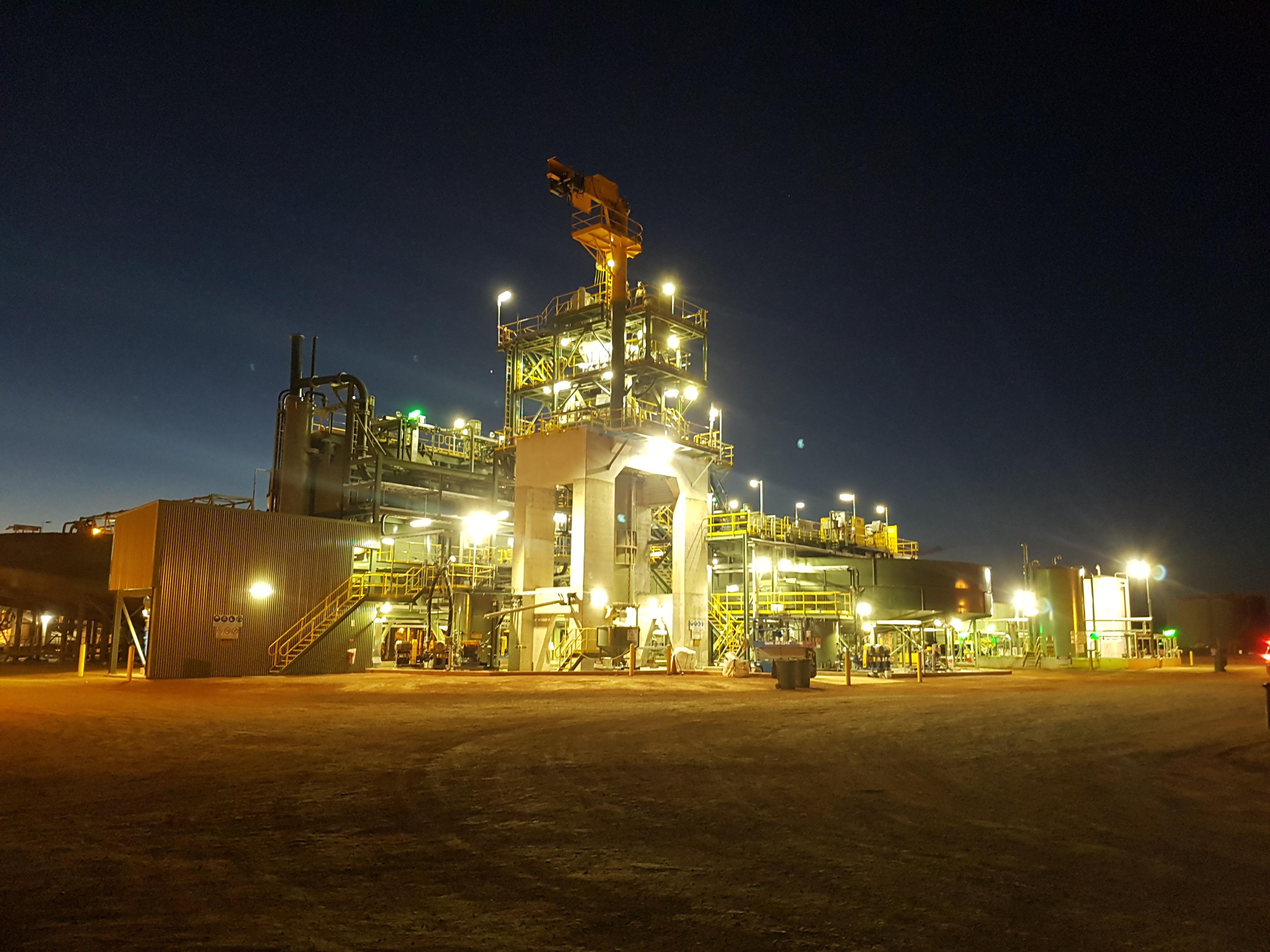As the amount of sulphide material treated increased, gold recovery decreased in response to the refractory nature of the ore. Testwork indicated that a 6% increase in recoverable gold could be obtained by grinding the sulphide material to 80% passing 10μm and leaching the mill product combined with the flotation tails in the existing carbon-in leach (CIL) circuit. This is where Metso Outotec comes in.
World’s largest stirred mill
In 2017, AngloGold Ashanti (AGA) embarked on a Recovery Enhancement Project to increase gold recovery. The project required the existing screened cyclone overflow to be redirected into a new flotation and ultra-fine grinding circuit, producing concentrate up to a rate of 400,000 t/a.
Metso Outotec supplied six TC200 TankCell® flotation units, one 14m High Rate Thickener and one HIGmill® HIG3500/23000. At this time (June 2021), the HIGmill is the world’s largest stirred mill supplied into a pyrite concentrate regrind duty. The HIGmill grinds pyrite/arsenopyrite flotation concentrate to 10μm in order to expose refractory gold for leaching. Despite its size and significance, only a single operator is required for the flotation, thickener and HIGmill area.
Process and mechanical design
Based on the vigorous testwork and strict design criteria, a HIGmill size of 3500kW with a 23,000L body was selected. To match the finer grind size, media of a 2 to 3mm size range and media specific gravity (SG) range of 3.8 to 4.1 was required. Media is retained in the mill due to media fluidisation conditions facilitated by settling velocity and flowrate.
Media is also held within the grinding chambers (stator compartments) by the centrifugal force generated by the rotors. The design inlet temperature of 30°C, 60kWh/t, 45%w/w yielded an exit temperature of 66°C. The HIGmill was designed with a high alarm temperature limit of 70°C and a trip limit of 85°C. An energy balance also confirmed that the exit temperature was suitable for the materials of construction.
Delivery and installation
Due to a successful collaboration with AngloGold Ashanti, the Recovery Enhancement Project was delivered very quickly. Installation time for the complete upgrade project was approximately six months. Prior to these works, the HIGmill delivery time was 30 weeks ex-works.
Once the civil foundations were ready, the HIGmill installation took four weeks, with cold and wet commissioning taking just one week. Both Metso Outotec and the site are happy with how the Recovery Enhancement Project was completed two weeks earlier than expected - and under budget.
Commissioning
Commissioned in May 2018, the mill has been operating since June 2018. Survey data was collected during ore commissioning to track performance as well as to further optimise the mill. It is important to measure the speed/power/slurry density/ media filling percentage flowrate relationship during commissioning for both water and slurry, as the relationship is different for each application.
The water calibration curve conducted during wet commissioning was performed with 19 tonnes of media, a media size range of 2-4mm and a media specific gravity (SG) of 3.9 t/m3. These values are used to assess the mill’s capability and for future operational guidance. These results can be put into power models for prediction of the operation and assist with future optimisation of the rotor design.
During ore commissioning, the slurry density was optimised to account for the slurry viscosity effect on energy efficiency. The mill was filled with 2-4mm ceramic media with an SG of 3.9 t/m3. The operating mill with greater than 50%v/v media filling, combined with longer run time for media wear in, resulted in improved energy efficiency.

